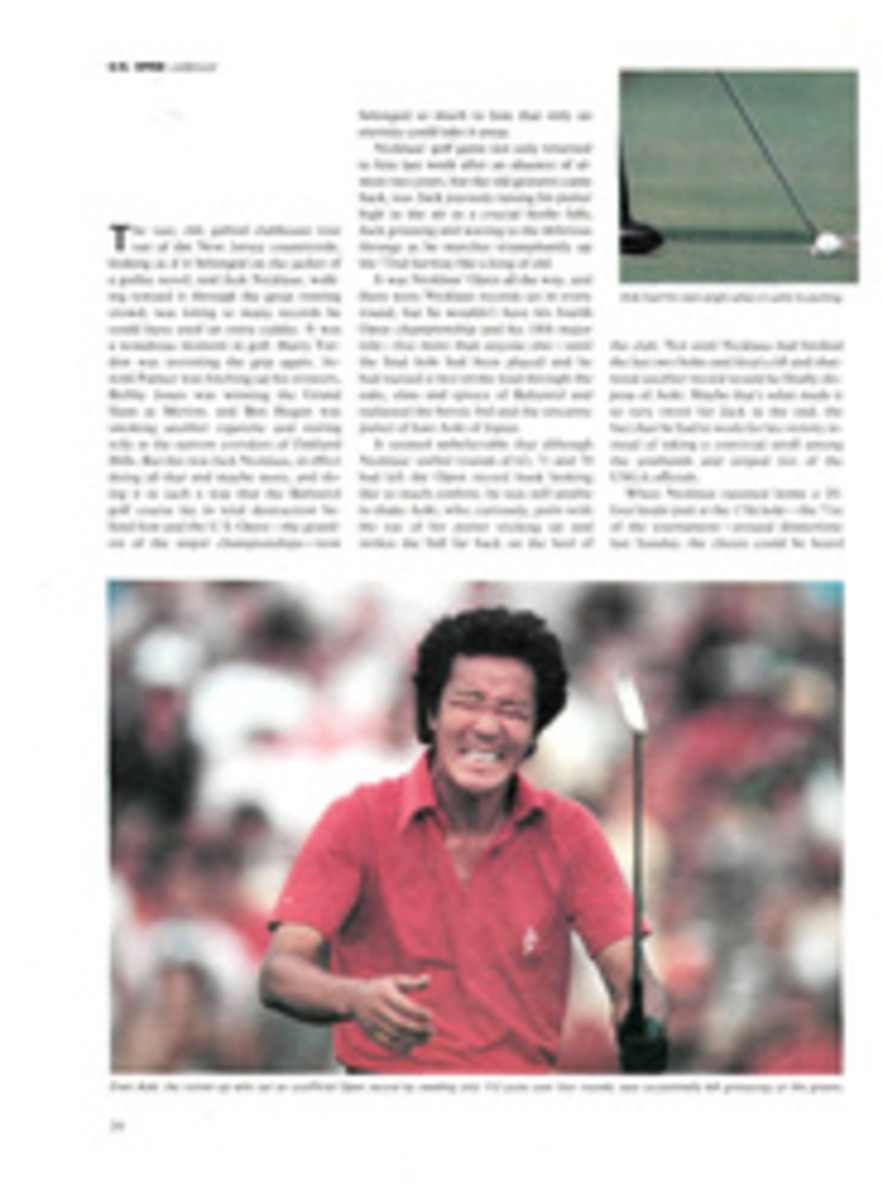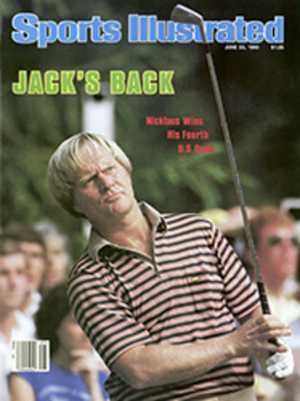
Gemütlichkeit in Chi
It's a motley crowd, the Chicago Sting, the club currently leading the North American Soccer League's American Conference with a 12-3 record, second best in the league behind the Seattle Sounders. Their German-American coach, Willy Roy, keeps bees and uses geese for watchdogs at his home. Team Vice-President Charlie Evranian was once a Detroit Tiger bat boy. Owner Lee Stern made his money trading soybean futures. Midfielder Bret (Kato) Hall is half Scottish, half Chinese. And the equipment manager, Willy Steinmiller, was one of the few white players on the otherwise all-black Indianapolis Clowns, a Globetrotters-style baseball team. One of his duties was to carry a midget around in a suitcase. But on the field, as the Sting demonstrated in beating the New England Teamen 5-2 last Saturday night, Chicago is strictly bratwurst and Beck's beer, a German-style team as smooth as Schlag and speedy as a Porsche.
Like Seattle and last year's Soccer Bowl champion Vancouver, both of which field decidedly English squads, Chicago has opted for uninationalism over the more usual NASL practice of assembling a U.N. smorgasbord. What these teams have achieved is a unified style that they hope, come playoff time, can overcome the multimillion-dollar hodgepodge that is the Cosmos lineup. And because Seattle and Vancouver, the latter having a dismal season so far, and the Cosmos are all in the National Conference, the Sting looks to have a better than fair shot at reaching the Soccer Bowl in all its Teutonic splendor.
Out in suburban North-brook, the Sting has leased a community park clubhouse and turned it into a paneled, beer-stein-decorated Bavarian chalet. Here, at what has become Bundesliga West, one of the principal reasons for the Sting's success holds court. A feisty, elegant little midfielder, Arno Steffenhagen, 30, is the team captain. With his full brown beard and serious look, he resembles a U-boat commander from Central Casting.
"There are several of us out there who think alike about soccer," he says in fine English. "It's telepathic. We've played together in America for three seasons, and some of us were on the same teams in Germany and Holland. The major reason we do so well is that we know what the other guy is thinking."
At first-division Hertha Berlin, Steffenhagen's teammates were Karl-Heinz Granitza, who has become the Sting's most explosive scorer, and the crafty Danish Winger Jorgen Kristensen. Kristensen also played with Dutch Forward Peter Ressel in Rotterdam. Even the team's Haitian International defender, Frantz Mathieu, speaks fluent German after two years in the second division there. And the Sting's top draft choice this year, Midfielder Rudy Glenn of Indiana University, attended high school in Mannheim.
The architect of the Sting is the 37-year-old Roy, who arrived in Chicago from Germany at age 11. Roy was an All-America wrestler at the University of Illinois and later an NASL star. In 1977 he was raised from assistant to head coach when the incumbent, Bill Foulkes of England, had a terrible first half of the season. In 1978 new president Clive Toye, the Englishman who masterminded the Cosmos' acquisition of Pelè, installed another Britisher, Malcolm Musgrove, as coach. But Musgrove got off to a disastrous 2-14 start and Roy was back in charge again. Last year, Roy led the Sting to a 16-14 record and the playoffs without the services of the heart of the team; Steffenhagen suffered a knee injury in the first game and was sidelined for the rest of the season. The doctors thought he would never play again. But his fierce determination plus a whole lot of physiotherapy brought him back.
Between seasons, owner Stern, who had been ready to throw in the towel and sell the Sting, changed his mind and came up with the bucks to buy Phil Parkes, a goalkeeper of the first rank. At Vancouver last year, Parkes had the lowest goals-against average in the league, .96. With Parkes, plus hard-kicking American Greg Ryan and Mathieu, the Sting beefed up a lagging defense.
Roy, who still speaks with a strong accent, says, "German soccer is the most exciting in the world and that's what we wanted here. We get fine support from the German-American community, but the real reason for all our Germans is that they're winners.
"Most of our European players have come from winning teams. They're in the habit of winning. We play a short passing game, working the ball downfield—not that boot-it-and-run English game. Also, we have four players who score goals, so it's difficult to key on our men.
"We have a common cause, a common belief that we will be league champions. Even our big shooters such as Granitza have stopped acting like stars. We're all pulling our weight, and I know we'll do it."
Chicago isn't up to the Total Soccer style of the great Dutch and German World Cup teams, whose players exchange roles as the game dictates. But they play a version of it in which three forwards remain upfield, ready to counterattack, and many of the Sting's 35 goals this season have come on breakaways.
"I don't know if it's German," says Parkes, "but I do know that with the extra help missing in the back, I've had to stop more shots this year already than all last season in Vancouver."
When the Sting took the field against New England in Comiskey Park Saturday night, 11,131 fans were on hand. With a 5-9 record, the Teamen have suffered from the handicap of a Flothru defense, which the Sting, giving a demonstration of German finesse, penetrated twice in the first half, giving up one New England goal in return.
In the second half Granitza scored twice. Believing they had been victimized by indecisive refereeing, the Teamen virtually stopped playing when the linesman signaled offside and was overruled by the referee. New England Keeper Kevin Keelan threw the ball out to Jack Carmichael, one of his defenders, who pushed the ball back into the net for an own-goal. Perhaps in frustration, the Teamen then proceeded to turn the rest of the game into a parody of the NHL brand of ice hockey. Canadian Forward Garnett Moen viciously elbowed Glenn in the face. English Forward Bob Newton loosened four teeth and possibly fractured the jaw of Sting Sweeper Horst Blankenberg and was ejected from the game.
Roy was furious. "I'm running out of players," he said. "There are such bozo teams in the NASL, all they can do is try to kill us."
And Steffenhagen added, "You hardly see this in hockey. Our penalty for skill is pain. It's crazy."
Afterward, the Sting repaired to the heart of the Chicago German community, Lincoln Avenue, which has a lineup of nightclubs and restaurants replete with giant inflated Adidas soccer balls, signed photographs of Franz Beckenbauer, Gerd Mueller and Sepp Maier, plus cuckoo clocks and stag antlers.
In the Zum Lieben Augustin bar, as Willy Roy worked thirstily at an enormous stein of Beck's, his mood improved. Phil Parkes' 9-year-old son Dean had managed to get hold of a microphone and was filling the room with his version of Blue Suede Shoes. The band went along with the youngster, and Roy smiled. "Ah, when you're winning, when you're on your way, even the beer tastes better," he said. Indeed it does, and if the Sting can avoid being pounded into intensive care as penalty for the finesse of its soccer, the beer should taste positively ambrosial.
PHOTO
Granitza, on the move here against Washington, is third in the NASL in scoring.
PHOTO
Roy knows he has a winner—if his players can stay whole.

